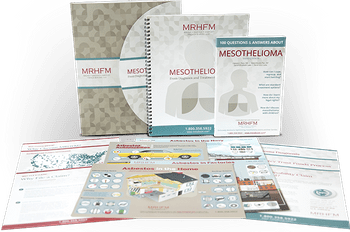Researchers have released the results of a new study that says the risk of death from mesothelioma varies by type. Published in the Journal of Occupational and Environmental Medicine, the cohort mortality study utilized an exposure index to evaluate individual cumulative exposure as a proxy of asbestos dose and evaluated the change in cancer mortality patterns following an extended period from the end of exposure.
Standardized mortality ratios (SMRs) were calculated for “several causes of death stratified by latency, cumulative exposure, and time since last exposure (TSLE),” the team wrote. “We observed a peak and then a decrease in SMR for lung, pleural, and peritoneal cancer.” For cumulative exposure, the researchers “observed a peak and then a decrease in SMR for lung and pleural cancer, but not for peritoneal cancer.” TSLE pleural cancer SMR “peaked at 20 to 29 years, then decreased,” while “peritoneal cancer SMR reached a plateau after 20 years and lung cancer mortality was in excess in each class.”
The research team concluded that they discovered different patterns in mortality in the main asbestos-related tumors.
Early Mesothelioma Diagnosis and Outcomes
While there is no cure for mesothelioma, the American Cancer Society (ACS) reports that the disease is can be treated and has the best outcomes if it's found early—when it's small and hasn't spread. In many cases, however, the ACS reports that the disease is not diagnosed “until it’s big enough to cause problems and a person goes to a doctor for help.” The good news is—times are changing.
Thanks to early detection and treatments that have improved dramatically over time, people now being diagnosed with mesothelioma may have a better outlook than current figures show, reports the ACS. Current survival rates “are based on people who were diagnosed and treated at least five years earlier.”
Researchers are studying early detection tests that could help find mesothelioma earlier and in its most treatable stages. Current first line treatments include surgery, chemotherapy, and radiation, with some of the newest and most promising treatments in varying stages of clinical trials. As these newer treatments are approved, they will give patients and their doctors even more options.
When it comes to early detection, numerous tests are currently in development. Some of the most promising include MESOMARK, the world’s first serum-based biomarker sensitive for mesothelioma; Slow Off-rate Modified Aptamer (SOMAmer) proteomic test, which measures a panel of 13 biomarkers to detect mesothelioma; Fibulin-3 Test, which can detect mesothelioma, and the progression of mesothelioma, early, and Human MPF Elisa Kit, which measures megakaryocyte potentiating factor (MPF)—a protein encoded in the mesothelin (MSLN) gene.
In addition to how early mesothelioma is detected, the ACS says survival rates are grouped based on age, overall health, how resectable the cancer is, and how well it responds to treatment. Other factors can also affect the patient’s outlook.
If you think you may have been exposed to asbestos at any point in your life, see your doctor right away—even if you do not have symptoms. Your doctor will refer you to a mesothelioma specialist who can administer tests, assess your history, and set up a monitoring plan. All offer the best chance to catch the disease early. See your doctor to assess your risk today.
Sources
Cuccaro, Francesco MD, Anna Maria Nannavecchia and Stefano Silvestri. “Mortality for Mesothelioma and Lung Cancer in a Cohort of Asbestos Cement Workers in BARI (Italy): Time Related Aspects of Exposure.” JOEM. Journal of Occupational and Environmental Medicine, May 2019. Web. 05 Jul. 2019.
“Survival Rates for Mesothelioma.” Cancer.org. American Cancer Society, Inc., 2019. Web. 05 Jul. 2019.
“What’s New in Malignant Mesothelioma Research?” Cancer.org. American Cancer Society, Inc., 2019. Web. 05 Jul. 2019.





